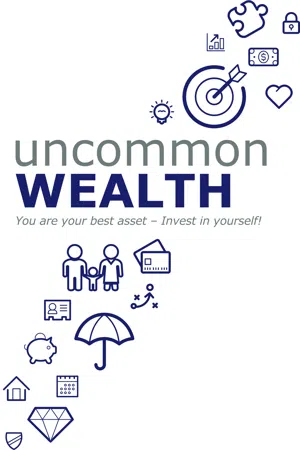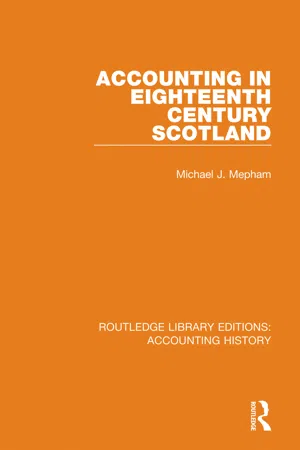Business
Residual Income
Residual income is the income generated from an asset or business after all expenses have been paid. It is the amount of money that remains after deducting the cost of capital from the net operating income. This type of income is often associated with passive income streams such as rental properties or investments.
Written by Perlego with AI-assistance
3 Key excerpts on "Residual Income"
- (Author)
- 2019(Publication Date)
- Wiley(Publisher)
Introduction Residual Income models of equity value have become widely recognized tools in both investment practice and research. Conceptually, Residual Income is net income less a charge (deduction) for common shareholders’ opportunity cost in generating net income. It is the residual or remaining income after considering the costs of all of a company’s capital. The appeal of Residual Income models stems from a shortcoming of traditional accounting. Specifically, although a company’s income statement includes a charge for the cost of debt capital in the form of interest expense, it does not include a charge for the cost of equity capital. A company can have positive net income but may still not be adding value for shareholders if it does not earn more than its cost of equity capital. Residual Income models explicitly recognize the costs of all the capital used in generating income. As an economic concept, Residual Income has a long history, dating back to Alfred Marshall in the late 1800s. 1 As far back as the 1920s, General Motors used the concept in evaluating business segments. 2 More recently, Residual Income has received renewed attention and interest, sometimes under names such as economic profit, abnormal earnings, or economic value added. Although Residual Income concepts have been used in a variety of contexts, including the measurement of internal corporate performance, this reading will focus on the Residual Income model for estimating the intrinsic value of common stock- eBook - ePub
Uncommon Wealth
You are your best asset - Invest in yourself!
- Bryan Dewhurst, Phillip Ramsey(Authors)
- 2021(Publication Date)
- BookPress Publishing(Publisher)
This sounds complicated and scary, but it doesn’t need to be. Building a business is a great way to create several streams of income. It certainly won’t feel residual when you start out, but the idea is to develop a business you can step away from or sell at some point.Starting a business is an investment. The rewards that have come with starting our business have been both awesome and humbling. The lives we have touched and those who have touched us have been priceless.Okay, let’s get down to it. How does a business help build Residual Income? We see five main ways.1. Generating or replacing your salary from leaving employment with someone else.2. You can provide employment to others, so you can leverage other peoples’ time, talents, and gifts to produce more than what you could do on your own.3. Capital: If you can invest your capital and provide a finished good that sells at a good profit margin, you can generate an above-average return on your capital.4. In business, you can borrow money from investors or a bank at a lower rate. If you are able to take that money and generate a gross profit of, say, 50% and a net profit of, say, 15% over time, you can expand faster and make even more wealth.5. If you input systems and procedures so your business can run without you, then you have something of value to sell to another potential business owner. When the business is not dependent on you, the value increases. That’s called capital appreciation.Christina Moffatt comes to mind as someone who took a passion and turned it into a business. During the economic meltdown of 2008-2009, she started bringing treats into work to help ease the anxiety everyone was feeling. She then leveraged that into a successful business and even made a television appearance on Cupcake Wars. Christina is now in a leadership role for an organization focused on helping small businesses all over Iowa and still owns her company. If you want to hear more about her story and the challenges along the way, listen to Episode 39 of the Uncommon Life Project. https://www.uncommonwealth.com/podcasts/christina-moffatt - eBook - ePub
- Michael J. Mepham(Author)
- 2020(Publication Date)
- Routledge(Publisher)
(44)In farming in the 18th century, where the preparation of regular annual accounts was normal. Young, the English agricultural writer, illustrates the use of Residual Income by an English farmer (a Mr Ruggles) in the 1780’s.(45) In analysing his operations for a period from Michaelmas 1784 to 31 December 1787 he charges interest at 5% on ‘capital employed’ (note that he uses this term). The capital employed is calculated as follows:“The live and dead stock of the farm, taken by appraisement, March 27th, 1784; also manuring, feed, and tillage, paid the outgoing tenant to Lady-Day, 1784, valued by Mr. John Harrison, for Mr. Brice and Mr. Ruggles.£. S. d. 289 4 0 Labour, rent, rates, taxes, &c. &c. the second half year, to Michaelmas, 1784. 357 14 7 Total first stock of the farm, or capital employed 646 18 7" 17.7 Ex Ante Residual Income
The foregoing examples illustrate the use of ‘ex post’ Residual Income as an measure of past performance but Residual Income can be estimated in advance of entering a venture in an attempt to assess its attractiveness as a worthwhile investment. This Annual Value would be an alternative to the calculation of the venture’s Present Value.(46) Hamilton does not suggest the use of Residual Income in this way but material in his arithmetic text shows that he was aware of the possibility of using ‘rate of return’ calculations for this end.(47)The Edinburgh Linen Copartnery’s appraisal (in 1757) of the costs and benefits of installing 100 looms, provides an example. In this appraisal the calculations, which are designed to identify the annual benefit and the annual cost, include an interest charge at 5% on the investment in the looms. There is also a charge for “use of the Looms” which may be assumed to be a year’s depreciation. There is no indication as to how this is calculated.(48)
Index pages curate the most relevant extracts from our library of academic textbooks. They’ve been created using an in-house natural language model (NLM), each adding context and meaning to key research topics.
Explore more topic indexes
Explore more topic indexes
1 of 6
Explore more topic indexes
1 of 4


